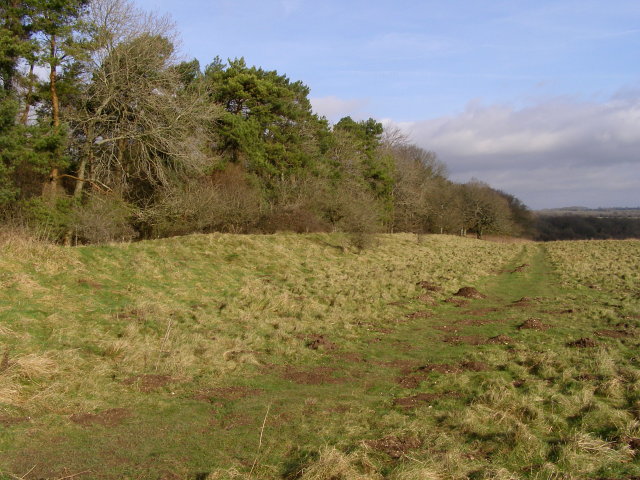Ackling Dyke on:
[Wikipedia]
[Google]
[Amazon]
 Ackling Dyke is a section of
Ackling Dyke is a section of
 Ackling Dyke is a section of
Ackling Dyke is a section of Roman road
Roman roads ( la, viae Romanae ; singular: ; meaning "Roman way") were physical infrastructure vital to the maintenance and development of the Roman state, and were built from about 300 BC through the expansion and consolidation of the Roman Re ...
in England which runs for southwest from Old Sarum (''Sorviodunum'') to the hill fort at Badbury Rings (''Vindocladia''). Part of the road on Oakley Down
Oakley Down Barrow Cemetery is a group of Bronze Age round barrows on Cranborne Chase, about east of the village of Sixpenny Handley in Dorset, England. It is a scheduled monument.
Description
There are many prehistoric remains on Cranborne Chas ...
has been scheduled as an ancient monument.
Much of the road exists as an exceptionally large embankment (''agger Agger may refer to:
* Agger (surname)
* Agger (ancient Rome), a type of ancient Roman rampart or embankment
* Agger (river), a river in North Rhine-Westphalia, Germany
* Agger nasi, an anatomical feature of the nose
* Agger Rockshelter, in Wisconsi ...
''), up to wide and high. This is much wider than most Roman roads. This would have been visible from a great distance and must have been intended to impress the native population, as it was unnecessary from an engineering viewpoint. It provided a rapid transit route for soldiers across Cranborne Chase.
In addition, in places the road cuts straight through prehistoric
Prehistory, also known as pre-literary history, is the period of human history between the use of the first stone tools by hominins 3.3 million years ago and the beginning of recorded history with the invention of writing systems. The use of ...
earthworks
Earthworks may refer to:
Construction
*Earthworks (archaeology), human-made constructions that modify the land contour
* Earthworks (engineering), civil engineering works created by moving or processing quantities of soil
*Earthworks (military), m ...
and barrows, showing the Roman attitude to the existing British social structure as well as proving to early antiquaries that barrows preceded the Roman period
The Roman Empire ( la, Imperium Romanum ; grc-gre, Βασιλεία τῶν Ῥωμαίων, Basileía tôn Rhōmaíōn) was the post-Roman Republic, Republican period of ancient Rome. As a polity, it included large territorial holdings aro ...
. At Bokerley Junction it cuts through both Bokerley Dyke and Grim's Ditch before being overlaid by a turnpike, now the A354. further west at Wyke Down it cuts through the Dorset Cursus. A series of watchtower sites have been identified along the route.
After leaving the Salisbury suburbs, the route crosses open country throughout, and nowhere comes close to any settlement. Apart from a section of the main Salisbury– Blandford road which follows its course, the road can mostly be followed along minor lanes and tracks.
At Old Sarum the road connected with the Port Way to Silchester
Silchester is a village and civil parish about north of Basingstoke in Hampshire. It is adjacent to the county boundary with Berkshire and about south-west of Reading.
Silchester is most notable for the archaeological site and Roman town of ...
(''Calleva Atrebatum
Calleva Atrebatum ("Calleva of the Atrebates") was an Iron Age oppidum, the capital of the Atrebates tribe. It then became a walled town in the Roman province of Britannia, at a major crossroads of the roads of southern Britain.
The modern villa ...
'') and London; and from Badbury Rings roads led to the harbour at Hamworthy (''Moriconium'') and to Dorchester ('' Durnovaria'').
Part of the road is on the Heritage at Risk Register because of the potential damage from arable ploughing.
See also
* Roman roads in BritainReferences
External links
{{coord, 50.9388, -1.9844, dim:30000_region:GB, display=title Roman roads in England Archaeological sites in Wiltshire Archaeological sites in Dorset Ancient dikes Scheduled monuments in Dorset